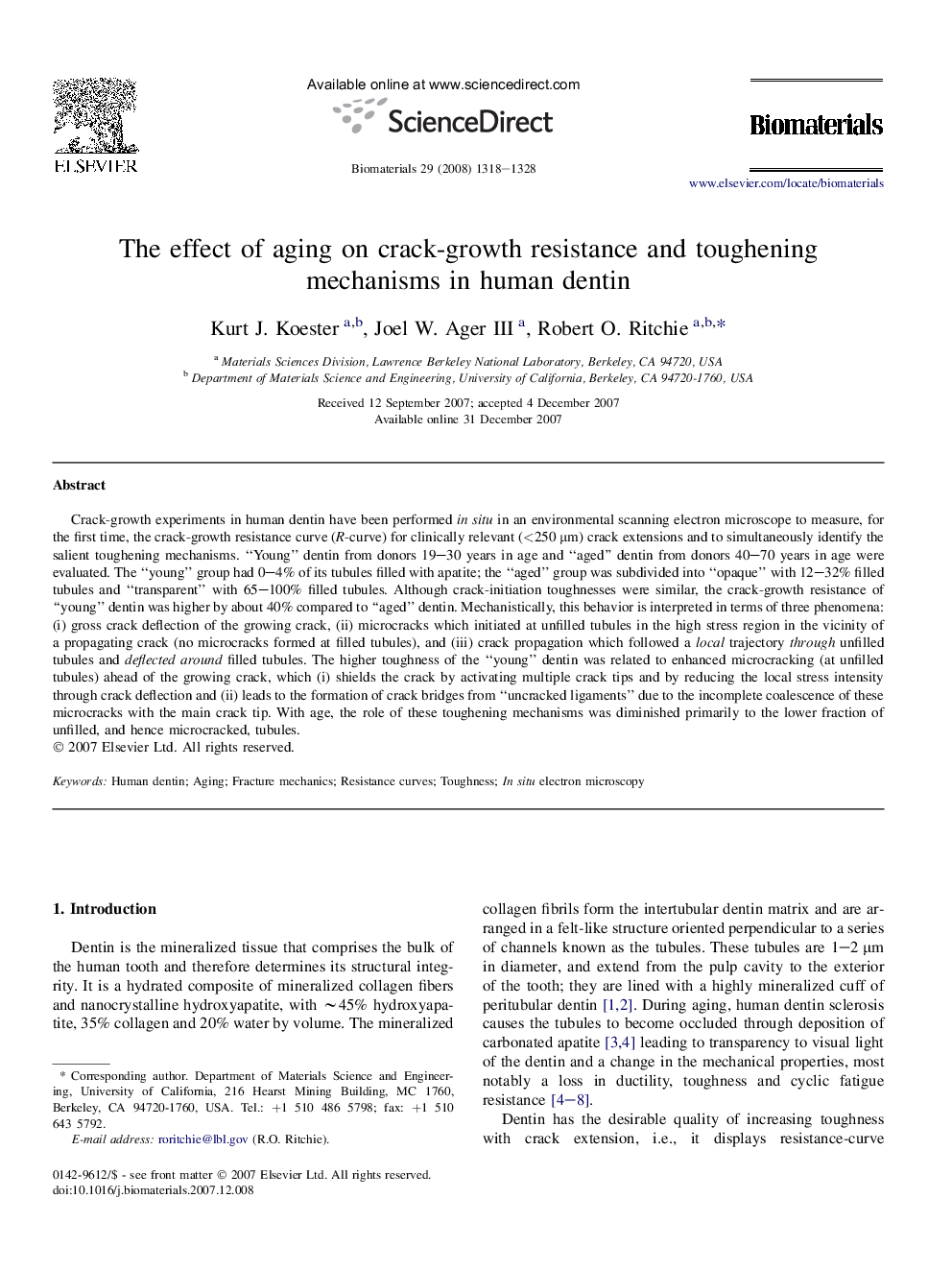| Article ID | Journal | Published Year | Pages | File Type |
|---|---|---|---|---|
| 9670 | Biomaterials | 2008 | 11 Pages |
Crack-growth experiments in human dentin have been performed in situ in an environmental scanning electron microscope to measure, for the first time, the crack-growth resistance curve (R-curve) for clinically relevant (<250 μm) crack extensions and to simultaneously identify the salient toughening mechanisms. “Young” dentin from donors 19–30 years in age and “aged” dentin from donors 40–70 years in age were evaluated. The “young” group had 0–4% of its tubules filled with apatite; the “aged” group was subdivided into “opaque” with 12–32% filled tubules and “transparent” with 65–100% filled tubules. Although crack-initiation toughnesses were similar, the crack-growth resistance of “young” dentin was higher by about 40% compared to “aged” dentin. Mechanistically, this behavior is interpreted in terms of three phenomena: (i) gross crack deflection of the growing crack, (ii) microcracks which initiated at unfilled tubules in the high stress region in the vicinity of a propagating crack (no microcracks formed at filled tubules), and (iii) crack propagation which followed a local trajectory through unfilled tubules and deflected around filled tubules. The higher toughness of the “young” dentin was related to enhanced microcracking (at unfilled tubules) ahead of the growing crack, which (i) shields the crack by activating multiple crack tips and by reducing the local stress intensity through crack deflection and (ii) leads to the formation of crack bridges from “uncracked ligaments” due to the incomplete coalescence of these microcracks with the main crack tip. With age, the role of these toughening mechanisms was diminished primarily to the lower fraction of unfilled, and hence microcracked, tubules.
